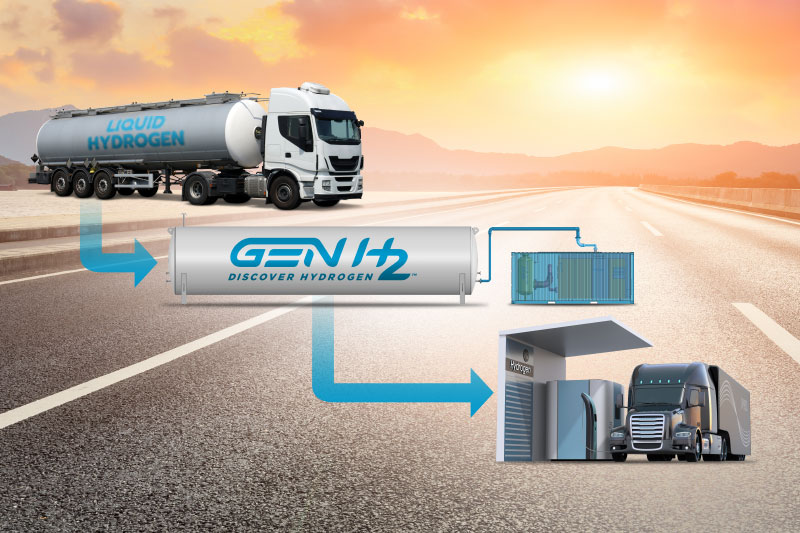Green Hydrogen Production Takes a Leap with Topsoe’s Game-Changing SOEC Facility in Herning
Picture a crisp summer morning in Herning, Denmark, where the air vibrates with progress instead of the old textile mills’…


Picture a crisp summer morning in Herning, Denmark, where the air vibrates with progress instead of the old textile mills’ rhythms. This town of 51,500 has reinvented itself as a shining example of the Clean Energy Transition. And at the center of it all, Topsoe—renowned worldwide for its catalytic know-how—is putting the finishing touches on a cutting-edge Solid Oxide Electrolysis cell plant. You can feel the excitement crackle across the site.
A Game-Changer in Herning’s Industrial Heart
In the first half of 2025, Topsoe reported an 11% revenue dip year over year, sliding to DKK 3.68 billion, thanks to a few global project delays and stubborn market headwinds. But don’t let that fool you—the company’s energy transition segment actually climbed 6% to DKK 839 million, driven by a rush of orders for Green Hydrogen Production and next-gen e-fuels.
Rather than scaling back, Topsoe poured DKK 676 million into clean-energy R&D in H1 2025, most of it fueling the new SOEC facility here. When the dust settles, this site will crank out 500 MW of solid oxide electrolysis cells every year, perfectly timed to meet a tidal wave of global demand for green hydrogen systems.
Scaling Solid Oxide Electrolysis Cells
So, why is Solid Oxide Electrolysis such a breakthrough? These systems fire up at a sizzling 600–1,000 °C, using a ceramic membrane to split steam into hydrogen and oxygen up to 30% more efficiently than run-of-the-mill alkaline or PEM setups. By tapping into leftover industrial heat, they squeeze every last renewable electron into hydrogen molecules—a real glimpse at the future of cost-effective, large-scale Green Hydrogen Production.
The Herning plant, now flagged as industrially ready, isn’t just another factory—it’s a buzzing innovation hub. Thanks to a €94 million boost from the EU Innovation Fund, its floors are dotted with pilot lines and quality-control rigs, where stacks roll off weekly for testing. Engineers, policymakers, and research teams work side by side to streamline processes, chip away at costs, and turbocharge global deployments of Clean Energy Transition solutions.
Driving the Clean Hydrogen Economy
Beyond Herning’s borders, orders for hydrogen, e-fuels, and Sustainable Fuels have ballooned to DKK 2.9 billion, up from DKK 2.0 billion a year ago. That’s a ringing endorsement from partners across Europe, Asia, and the Americas. In fact, Topsoe is already spearheading several Power-to-X Technologies projects that convert surplus renewable power into chemicals and synthetic fuels, giving refineries a powerful way to slash carbon intensity with its proprietary HydroFlex® process.
Of course, hefty investments come with trade-offs. Operating cash flow plunged from DKK 805 million to just DKK 13 million, thanks to major upfront spending on Herning. But management isn’t batting an eye—they’ve reiterated strong long-term demand for hydrogen, even as they adjust 2025 revenue guidance to DKK 7.6–8.2 billion, pointing to some delayed final investment decisions from key clients.
EU and Global Collaboration Fuel Momentum
But the Herning facility doesn’t stand alone; it’s woven into a larger European tapestry aimed at decarbonizing heavy industry. With backing from the EU Innovation Fund and Denmark’s no-nonsense hydrogen strategy, it’s become a template for regions hungry to follow suit. From shared learnings on site optimization to pooled funding models, it spotlights how public and private players can split the risk and fast-track big-ticket projects.
Across the Atlantic, policymakers in the US are finally nailing down the fine print on the clean hydrogen production tax credit, giving investors more confidence. Meanwhile, in Asia, governments in Japan and South Korea are streamlining regulations and incentive programs to attract capital. Once these policy signals solidify, Topsoe plans to ramp up exports of its SOEC stacks and modules, making sure the next wave of hydrogen ventures hits full stride.
Future Promise and Global Impact
So, what’s in it for all of us? Mass-produced SOECs in Europe could unlock gigawatts of Green Hydrogen Production by 2030, cutting millions of tonnes of CO₂ emissions annually. The knock-on benefits are vast: new high-tech roles, growing local supply chains, and an uptick in Sustainable Fuels—from cleaner trucks to aviation-grade jet fuel, all born from renewable electrons turned hydrogen.
Here in Herning, this isn’t just a ribbon-cutting—it’s a glimpse into tomorrow’s energy world. Imagine renewable electrons morphing into clean, versatile molecules that power our homes, trucks, refineries, and even passenger planes. The place crackles with possibility, and at the helm, Topsoe is steering us toward a truly carbon-neutral horizon—one hydrogen cell at a time, and every day brings fresh breakthroughs.
What's Your Reaction?


















































